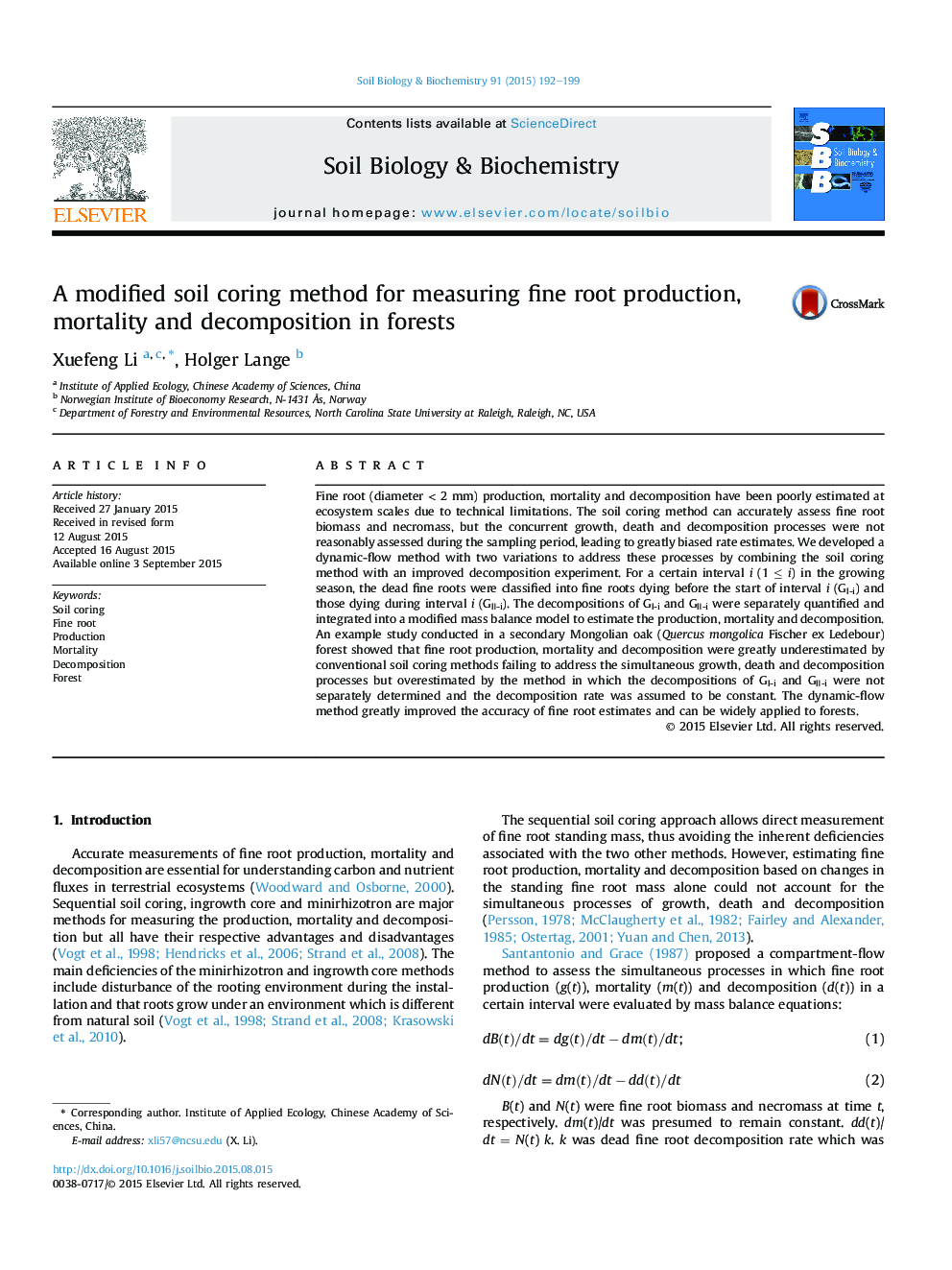| Article ID | Journal | Published Year | Pages | File Type |
|---|---|---|---|---|
| 8363808 | Soil Biology and Biochemistry | 2015 | 8 Pages |
Abstract
Fine root (diameter < 2 mm) production, mortality and decomposition have been poorly estimated at ecosystem scales due to technical limitations. The soil coring method can accurately assess fine root biomass and necromass, but the concurrent growth, death and decomposition processes were not reasonably assessed during the sampling period, leading to greatly biased rate estimates. We developed a dynamic-flow method with two variations to address these processes by combining the soil coring method with an improved decomposition experiment. For a certain interval i (1 â¤Â i) in the growing season, the dead fine roots were classified into fine roots dying before the start of interval i (Gâ
-i) and those dying during interval i (Gâ
¡-i). The decompositions of Gâ
-i and Gâ
¡-i were separately quantified and integrated into a modified mass balance model to estimate the production, mortality and decomposition. An example study conducted in a secondary Mongolian oak (Quercus mongolica Fischer ex Ledebour) forest showed that fine root production, mortality and decomposition were greatly underestimated by conventional soil coring methods failing to address the simultaneous growth, death and decomposition processes but overestimated by the method in which the decompositions of Gâ
-i and Gâ
¡-i were not separately determined and the decomposition rate was assumed to be constant. The dynamic-flow method greatly improved the accuracy of fine root estimates and can be widely applied to forests.
Related Topics
Life Sciences
Agricultural and Biological Sciences
Soil Science
Authors
Xuefeng Li, Holger Lange,
